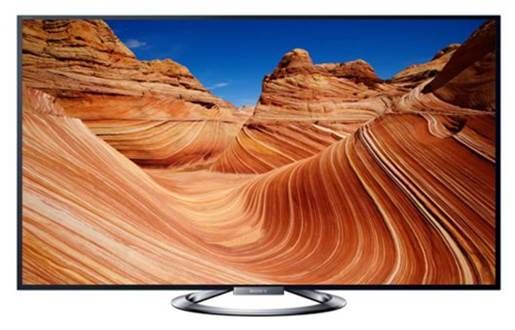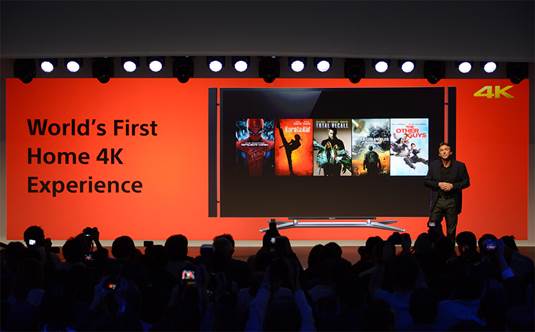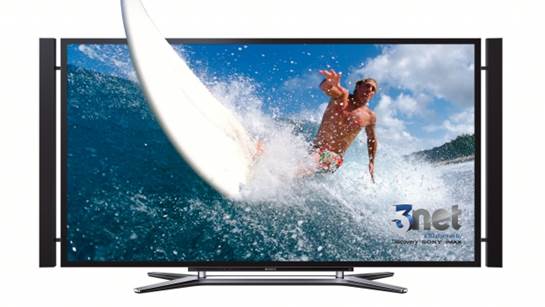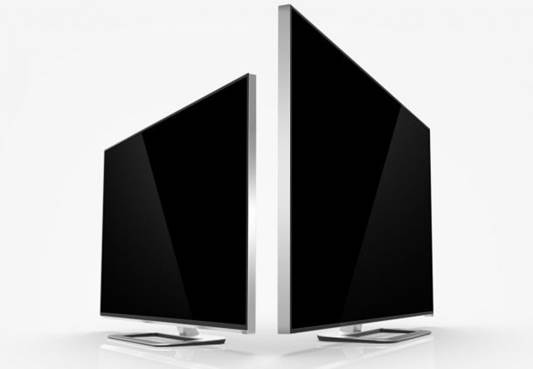Sony needs to turn around its TV
business and has banked its future on 4K Ultra HD. But is the world ready for
yet another resolution revolution?
At CES 2013 Kazuo H., the President and CEO
of Sony Corporation, reiterated his commitment to revitalize Sony's core
business in three major areas: Digital Imaging, Games and Mobile.
Although TVs were not part of Sony's core
area of focus, Hirai mentioned that it will remain a significant part of Sony's
business and promised to turn around its dwindling revenues.

Sony
needs to turn around its TV business and has banked its future on 4K Ultra HD
In fact, Sony is confident that it will
return its TV business to profitability, after having made decisions to cut its
losses – ending its LCD manufacturing partnership with Sharp and cutting the
number of Bravia TV models.
However, just focusing on those areas may
not be enough to get them back in the black, as LCD TVs are fast becoming
commoditized. Prices of LCD TVs have come down so much and so fast that it has
eroded their once lucrative profit margins. With such a bleak outlook, it's no
wonder that analysts have been skeptical at Sony's ambitious plans for their TV
business.
Even though it may seem like chances are
slim, there's one glimmer of hope left. The upcoming 4K Ultra HD format may
present an opportunity to capture a largely untapped consumer market.
Is the world ready for 4k?
But we need to do a reality check here: Is
the market prepared for yet another TV upgrade? The most up-to-date consumers
have just upgraded to a Full HD LED TV panel with Internet connectivity and 3D
features. Are consumers really willing to invest in yet another TV for the
home?
Looking at the past, it's clear that
consumers' appetites for LCD TVs only truly kicked-off when HD content was
readily available through broadcasters or Blu-ray discs. The advent of
high-speed Internet helped as well, as more HD content was made available
through streaming formats. That allowed users to easily consume HD video on
their television sets, using third party media players like the WD TV Live or
gaming consoles like the Xbox 360.
But if we look at the state of things
today, 4K content is nowhere to be found. The industry has yet to even come to
terms with how 4K content can be distributed, as no available media format has
the capacity to hold the vast amount of information needed for a typical
two-hour movie.
Even executives we spoke to couldn't give
us a straight answer on the size of a feature length movie. But if we assume
that fi le size is linearly associated with resolution, then if we quadruple
the size of a typical movie (since 4K has four times the pixels of full HD),
the final size of a 4K movie will come out to be roughly 80-100GB. Although the
highly elusive BDXL (Blu-ray with triple layers) format can store that amount
of information, it would still require a new player to do so – no such player
exists today.

The
final size of a 4K movie will come out to be roughly 80-100GB
Similar to the switch from SD to full HD,
the capital outlay required to go from full HD to 4K for any broadcasting
studio can be immense. As long as 4K TV has not attained mainstream status,
there's little incentive for TV studios to upgrade.
Movies, on the other hand, are a different
story all together. Cinemas have been screening digital movies at 4K for some
time right now, so it makes perfect sense for movie studios to standardize
their production workflow in 4K and publish content to 4K (sadly though, most
movies we see in the theatres today are still projected using 2K sources but
upscaled to 4K resolution).
How big is 4K?
4K Ultra High-definition (UHD) TV is twice
the resolution of Full-HD, at 3840 x 2160 compared to 1920 x 1080, with four
times as many pixels.
(Trying to) deliver 4k to your home
When it comes to 4K content, Sony has
several approaches. The more immediate fix is to get consumers to upscale all
full HD content to 4K. According to Sony, this isn't just a simple linear
upscale, but an elaborate operation which involves a rather complex algorithm
of image analysis and pattern database lookup. From what Sony has demonstrated
at CES, the X-Reality Pro engine looks like a promising solution as the
upscaled images were sharper and more detailed – a vast improvement over the
upscaling of SD to full HD.
Sony will also be releasing new Blu-ray
titles mastered for 4K TVs in spring this year, when the more affordable 55 and
65-inches make their way into the market. Although the Blu-ray titles will be
branded as '4K' on the cover, the contents will still be in 1080p and playable
on regular Blu-ray players. What the mastering to 4K does is to expand the
color information of the images as well as improve the details (possibly by
lowering image compression) so that the upscale engine can do its job well.

Sony
plans to bundle 4K content in customized boxes to be sold with their 4K TVs in
selected markets
But the real deal at the end of the day is
content in full 4K glory. Sony announced at CES that they will make a download
service for real 4K content for customers in the United States. Unfortunately,
it's only limited to the United States, and like all content distributed via
the Internet, it may be long before it's available in other countries. In
addition to that, Sony plans to bundle 4K content in customized boxes to be
sold with their 4K TVs in selected markets. That may solve the need for 4K
content at sale, but variety in the future would still be an issue – unless
customers like to watch the same movies again and again.
Sony's edge is in movies
With Sony Pictures under their umbrella,
Sony's advantage in the 4K game is clear. In fact, Sony is the only consumer
electronics company with a movie studio, which can be used as leverage to
kick-start their 4K strategy. Other electronics companies like Samsung have
resorted to partnering with service providers like Netflix to help stream
content in 4K. But with the increased bandwidth requirements of 4K videos, it
would be extremely difficult to stream and maintain image quality over long
periods, which is why Sony's movies will be downloaded and not streamed over
the Internet.

Another
hurdle for 4K is distribution. Unlike current HD standards, 4K video formats
demand a ton of storage and broadband bandwidth to transmit and store.
Finally, the last piece in Sony's 4K
strategy seems to be in content creation. At CES, Sony revealed a prototype 4K
camcorder for consumers. Although just a prototype, it shows Sony's commitment
in covering all bases related to 4K. This is in addition to 4K camcorders
already in Sony's stable for professional users.
It's not difficult to see that Sony is
attacking the 4K market from various angles, and it's precisely the necessary
ingredients needed to get consumers excited all over again. It's not only Sony
who's at the game right now, but mobile chip makers like NVIDIA and Qualcomm
have also pledged support for 4K with their next generation mobile devices. But
whether 4K will gather enough volume to bring Sony back into profitability is
still a question that remains unanswered.